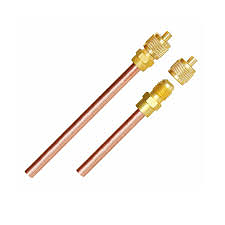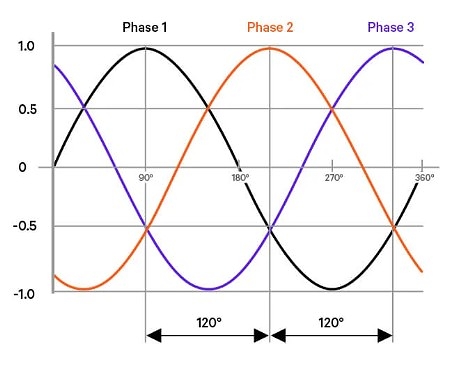

Frost Chill Cooling

Guide to buying second-hand refrigerators
Although buying anything second-hand will always come with risks, the important part is knowing what to look out for.
With the rise in costs, sometimes buying a second-hand fridge may be the more economical option than buying a new one.
This guide will give you a step-by-step guide to help avoid buying a liability.
Please note that this guide is specific to under-counter fridges, beverage coolers and common commercial units, not all aspects have been included.
First thing first, do the following checks before turning the unit on:
1. Compressor checks
You may have to open the front or back grille of the fridge to inspect the compressor, condenser and pipes.
1.1. Check the general condition and cleanliness
It’s extremely difficult to keep refrigerators spotless, and there may be rodent faeces and some dirt present, but it should not be excessive.
If the fridge is filthy and full of gunk, ask yourself if you would ever buy a filthy second-hand car.
1.2. Check the electrical
You do this because if someone has worked on the fridge before and couldn’t be bothered to insulate or neaten the wiring, there is a good chance many other short-cuts were performed.
- Check the plug and main cable for damages.
- Open the compressor compartment and check if the earth wires are connected.
- Check if the wiring joints are insulated and not hanging about.
- Check the plug and main cable for damages.
- Open the compressor compartment and check if the earth wires are connected.
- Check if the wiring joints are insulated and not hanging about.
1.3. Check if there is gas (refrigerant)

Open the valve cap (if there is one). It’s the small brass piece that’s nearest to the compressor.
Push the valve with your finger to see if there is a considerable “hissing” sound. If you have gauges, the pressure should be more than about 20psi. Any lower means low refrigerant, meaning there is a leak.
Although it’s not perfectly accurate just pressing the valve to see if there is pressure, you will at least get an idea if there is gas in the system.
NEVER buy a fridge with even a “little leak”. Leaks cause moisture to enter the system forming acid which can erode components.
1.4. Smell the gas
Sounds odd, but when you press the valve you will get some residue on your finger. If it smells like “cat urine”, sort of acidic smelling, the system has a high level of acid – Avoid purchasing the fridge!
The acid in the system will eventually corrode the compressor windings and blow out the compressor. This will mean you will have to replace the compressor soon enough.
1.5. Check for rust
Have a quick look for rust and patination (excessive green residue on the copper pipes). Scratch the areas to see if it’s just a thin superficial layer. This could just be environmental corrosion. If the rust is thick and solid, there is a high chance that the corrosion is excessive – Do not buy the fridge!
1.6. Check the condenser unit

This is the block next to the compressor and looks like a car radiator.
If it’s dirty it can be cleaned, however, the temperatures may have exceeded and compromised the system.
Check if the fins are straight. If the fins are bent and seem damaged, although you can straighten them with a “comb” or screwdriver, it could mean that the system was overheating during operation.
Although a few bent fins are acceptable, large areas where the fins are bent or compressed mean that the unit has been running with inefficient cooling, therefore a high chance of over-heating.
2. Inspect the Fridge compartment
2.1. Look for excessive rust
There will always be some rust in a refrigerator compartment, however, it should not be excessive as this will compromise your food health and safety.
You could sandpaper it down and treat it with enamel paint, however, haggle the price down if this is the case.
2.2. Door seal check
Very important! Frequently used refrigerators often have poor seals. Although they can be replaced, if the seals are in really bad shape, this is evidence that the compressor has been overworked and its life span has been compromised.
Fridges rely on seals to keep them running efficiently, but more important, they help to prevent the over-working of the compressor.
2.3. Check door handles, and hinges
Just have a quick look if the hinges and handles are relatively OK.
Depending on age, make and model, some fridge hardware items such as hinges and handles could be obsolete and difficult to replace.
2.4. Check the evaporator
This is the cooling apparatus usually on the upper side of the refrigeration compartment.
Without having to strip it down, have a look at the condition to see if the fins are damaged. Damaged and excessively bent fins could be a bad sign as evaporators are usually made from aluminium, which is soft and extremely difficult to repair.
Usually, evaporators on second-hand refrigerators are very dirty, which can be cleaned and generally would not have compromised compressor overload.
Once you have done physical inspections, you can turn the fridge on.
3. Turn the fridge on and listen for noises
3.1. Listen to the compressor
If the compressor is making knocking sounds, that is a sign the compressor will need to be replaced at some point. Another thing to look out for is if the compressor runs for a few seconds and then stops and there is a slight “click”. This click is the compressor Overload, which could either be a faulty capacitor or a faulty starting unit.
3.2. Listen to the fans
Listen to the condenser fan (in the compressor compartment) and the evaporator fans (in the actual fridge).
If they make a high-pitched sound or a “gargling” noise, they will need replacing which is not a serious issue. Just make a note and haggle the price for the fridge.
Note that not all commercial fridges have fans in the evaporator (inside the actual fridge compartment).
Some fridges make some weird sounds such as hissing, gurgling, and “burping” sounds, which are normally heard on the evaporator itself. This is normal and nothing to worry about.
4. Be patient
5 minutes of running time is not good enough to determine if a fridge is working. Even though it may feel cool, let it run for at least 15 minutes first before making the purchase.
This gives time for the refrigerant to compress and cycle, and allows the compressor to run at full capacity.
4.1. Feel the compressor
If the compressor is hot (warm is fine) but too hot means the compressor is compromised, do not buy the unit.
4.2. Listen to the fans and compressor again
If no weird noises are coming from the compressor or fans, then there is nothing to worry about.
4.3. Notice the temperature
Depending on the size of the fridge, it can take about 15 to 60 minutes for the compartment to cool at the right temperature.
However, after 15 minutes, you will notice a significant drop in temperature, to more or less 8°C.
Ideally, the fridge should be empty when checking the temperature as it will speed up cooling.
Although not every eventuality could be listed, you should have a much better idea of the condition of the fridge before purchasing.
Follow this guide and you will certainly look like a professional when purchasing refrigeration units and haggle the price down!
Explore More...
All rights reserved.










